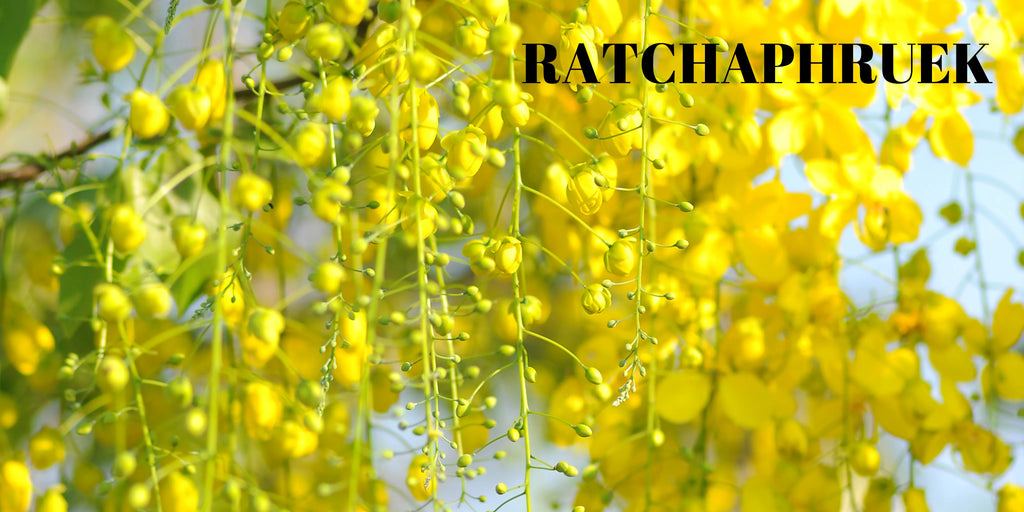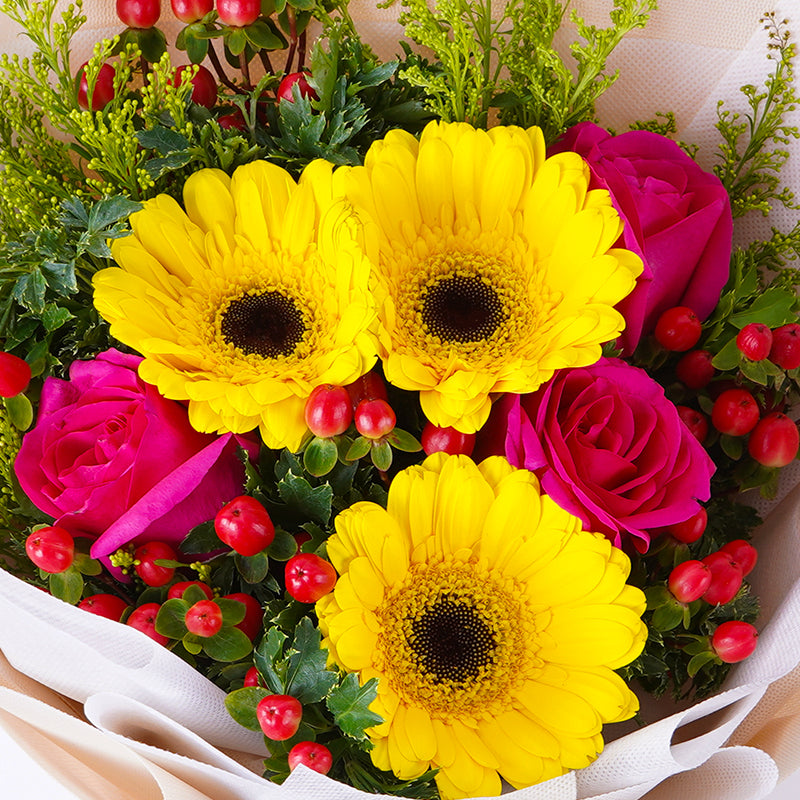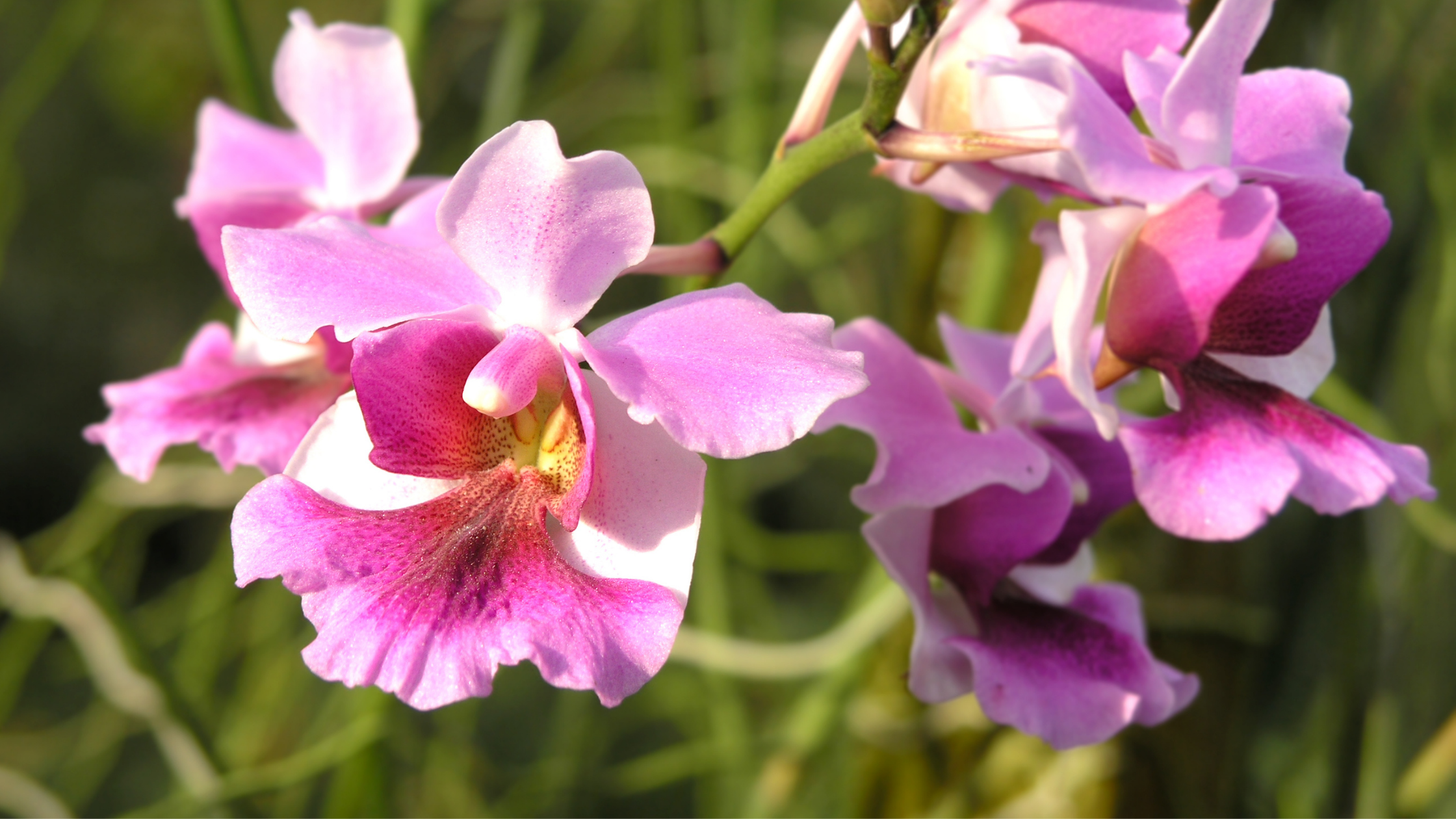The beauty of flora and fauna is that some of them are used to uniquely represent a country. Every country has its national flower or floral emblem which is based on its history, tradition, or even the principles of a time-honoured conventional belief. The meaning behind these national flowers is what makes the country more united as they share a blooming symbol of what the country represents. Get to know your country’s national flowers with our list of South East Asian countries and their national flowers.
Singapore
The modern state of Singapore goes back to the early nineteenth century. It’s mesmerizing how many relics of Singapore's multi-cultural, colonial, and wartime past can still be found in and around the city to this day. Tourists can visit monuments, museums, and memorials, or even take a walk along a heritage trail for a true journey through time. But enough of history, let’s take a blooming trip to the origin of Singapore’s national flower.
It is a self-flowering plant that may produce up to 12 buds per inflorescence, with an average of four flowers blooming at a time. 5 cm in diameter and 6 cm in height are the dimensions of each bloom. Like its parents, the petals are twisted so that the back faces the front. Two rosy-violet petals and the top sepal adorn the upper part of this flower, while the two pale mauve lateral sepals adorn the lower half. Orchid fan-shaped lip is violet-rose in colour, then fades into a flaming orange with a dark purple centre that is beautifully flecked.
Singapore’s national flower is the Vanda Miss Joaquim - for its "resilience and year-round blooming quality", the meaning behind this flower is to represent Singapore's uniqueness and hybrid culture.
Fancy name, isn’t it? (pronounced Joe-ah-Kim). This beautiful multi-coloured orchid is named after Miss Agnes Joaquim, a Singaporean who bred the orchid in her garden around 1890. Mr S. Dhanabalan, former Minister of Culture, announced the creation of Vanda Miss Joaquim as Singapore's National Flower on April 15th, 1981. The orchid can be found growing in Tanjong Pagar's National Orchid Garden, Botanic Gardens, Mandai Orchid Gardens, and Vanda Miss Joaquim Park.
Brunei
Brunei is the next country on the list, and it is known for its lush rainforest teeming with colourful flora and fauna. Brunei has a population of 459,500 people and a vibrant mix of cultures! The country is divided into four districts and is located on the island of Borneo, between the East Malaysian states of Sabah and Sarawak.
Brunei, known for its multicultural population as well as its flora and fauna, designated the Simpor as its national flower.
The Simpor, or scientifically called Dillenia, is beautifully illustrated on Brunei's one-dollar note and grows most commonly alongside rivers- particularly the Temburong River. It has yellow petals and pink fruit resembling its flower and large leaves. This is also commonly seen on large banners during Brunei's national celebrations.
Other uses for the Dillenia plant include medicinal purposes and storage usage. Because of its therapeutic characteristics, the leaves and roots of the plant are used to treat inflammations, itches, stomach aches, and postpartum recovery, among other conditions.
Myanmar
The stunning country of Myanmar is an absolute must-see for vacationers who are interested in Buddhist temples and tropical beaches. However, before we discuss how lovely the country's national flower is, we ought to perhaps talk about the Burma/Myanmar problem. Is it true that “Myanmar” and “Burma” refer to the same country? Why do people call it either one if it's the same thing? We certainly do have the answer for you! Since 1989, when the country's name was changed from Burma to Myanmar by a military dictatorship, Myanmar has been the official name of the country. However, there were still people and countries who continued to use the name Burma, which put the country in a peculiar situation - a country with two names! Moving forward, let's refer to the official name of the country, which is Myanmar.
Symbolising strength and durability, Padauk can be used for furniture design and making.
Padauk's golden fragrant flowers are also known as Myanmar's national flower.
While the tree represents strength, the flower, with its fragrant scent, represents youth, love, and romance. The flower, which blooms in April, appears to be a sign of the first April showers as well as the New Year's celebrations. The first month of the traditional lunar calendar in Burma begins in mid-April when Padauk flowers bloom. They also give flower necklaces to tourists to show their hospitality and goodwill. That may be why most people consider the Padauk to be the national flower. It is also a favourite flower of poets and artists. It is frequently depicted on pottery and ceramics, as well as sculpted in stone. As a result, the flower has long been a part of daily life in Myanmar.
Cambodia
The miracle of present-day Cambodia is a country that is experiencing a rapid economic expansion, and the skyline of its capital city, Phnom Penh, is rapidly expanding amidst a cloud of concrete dust and scaffolding. This is just one of many amazing contrasts between the country's old and new structures.
Once upon a time, in 2005, King Sihamoni issued a royal proclamation designating the Rumduol flower as Cambodia's national flower.
An emblem of environmental protection was also recognised by the government. When in full bloom, the Rumdol flower, which has petals that are a delicate white-yellow, spreads out like an umbrella, and its unique shape is employed in a wide variety of traditional handicrafts. The bark on the stem is a yellow-brown colour. Traditional Cambodian medicine uses the blooms to treat dizziness and heart and blood pressure issues, while the bark is used to treat fever. Several Cambodian places have the word Rumduol in their names. Sray Vieng province's Romdoul District and Battambang province's Ou Rumduol commune both have Romdoul Districts as part of their jurisdictions. Also, attractive Cambodian ladies are sometimes referred to as Rumduol, which is also a feminine name in the nation.
Indonesia
There aren’t many places in the world that can compare to Indonesia in terms of diversity. C’mon think of one, we’ll wait… can’t think of any? That’s what we thought. Considering the scale, this shouldn't be a surprise. The population of 6,000 people live on the country’s at least 17,000 islands, which are located in the centre of Southeast Asia. Indonesia has a wide range of scenery as well. The collection of people, civilizations, languages, and faiths is endless. With just one trip, you can virtually visit a hundred different cultures.
On June 5, 1990, a new milestone was set as Indonesia became the first country to have three national flowers at the same time. Why have one when you can have three, right?
Yes, in recognition of World Environment Day, the Indonesian government chose that day to officially proclaim the Moon Orchid (Phalaenopsis Amabilis), Melati (Jasminum Sambac), and Rafflesia (Rafflesia Arnoldi Indonesia) as the national flowers of the country.
As a tribute to fallen soldiers, the Melati flower bears a striking resemblance to the jasmine that adorned Ibu Pertiwi (Indonesian national personification). For various reasons, the other two national flowers were chosen. Both the Moon Orchid and the Rafflesia were chosen for their uniqueness and the diversification of Indonesian floral species.
Laos
Beautiful scenery, ethnic cultures, and unexplored sites may be found across Laos, which is also known as "The Land of a Million Elephants". Thailand has some of Southeast Asia's most stunning waterfalls, such as Tad Fane and Dong Hua Sao. With its welcoming people, beautiful Buddhist temples, and intriguing historical monuments, Laos is well-known for its ability to take travellers "back in time." This country is a cultural rollercoaster and that doesn’t make its national flower any less significant.
You may be more familiar with the Dok Champa by its popular name, the frangipani. This evocative tropical flower is observed everywhere from north to south in Laos, but it is primarily used for adorning monasteries.
Dok Champa became the national flower of Laos.
It has a lovely, seductive aroma. You might even receive a string of these white and yellow flowers around your neck as a welcoming gesture, or you might see a bunch of them used to decorate a ceremony. However, no matter where you go in Laos, the meaning of Dok Champa for the people there is always the same: joy in life and sincerity.
Malaysia
There is a strong dedication to variety in Malaysia, and in addition to the Malay people and the indigenous communities, there is also a substantial Chinese and Indian population in Malaysia. This is represented in the architecture and cultural artefacts that can be seen throughout the country. Hiking, scuba diving, shopping, and trying out the local cuisine are just some of the options that are available to foreigners that come to this destination.
Introduced into the Malay Peninsula in the 12th century as an ornamental plant, the Bunga Raya was officially declared by Prime Minister Tunku Abdul Rahman Putra Al-Haj as the national flower of Malaysia on 28th July 1960.
The word "flower" in Bahasa Malaysia is pronounced "bunga," while the word "celebratory" or "great" is pronounced, "Raya." Together, these words express the celebration of unity in the multicultural nation of Malaysia. The colour red on the petals represents the bravery, vitality, and rapid growth of Malaysia, while the five petals are symbols of the five National Principles of the Rukun Negara that Malaysians live by - belief in God, loyalty to the King and country, the supremacy of the Constitution, rules of law, courtesy and morality.
The Philippines
Never ask a Filipino what the Philippines are known for cause there would be too much for them to even begin with! The Philippines have a lot to offer intrepid explorers, from bustling cities to breathtaking beaches, picturesque mountains, and everything in between. Here’s a fun fact for you! The Philippines have become known as the "text capital of the world" due to the extremely high number of text messages that are sent every day across the entire country. Where exactly in the world is the Philippines located? It is located in Southeast Asia, right in the middle of the Pacific Ring of Fire, also known as the Circum-Pacific belt of the world! That all of the Philippine islands are connected by "a trail along the Pacific Ocean" that is dotted with active volcanoes is what this statement signifies.
Governor-General Frank Murphy made the decision in 1934 to designate the Jasminum sambac, more generally known as the Sampaguita, as the Philippines’national flower.
It is said that the white flower on this plant represents innocence, fidelity, and optimism. The fragrant blooms are typically used in the creation of garlands as well as perfumes. Because of the pervasive notion that Sampaguita is only presented to gods and saints in the Philippines, it is extremely uncommon for one person to bestow Sampaguita upon another as a token of appreciation or as a gift to another individual.
Thailand
Located in the heart of South East Asia, Thailand is home to more than 77 million people. Thailand's various ecosystems include the hilly forested northern frontier, the lush middle plains, the vast plateau in the northeast, and the rough coastlines along the small southern peninsula, all of which are located entirely inside the tropical zone.
Ratchaphruek, or some would call it “The Royal Tree”, is the national flower of Thailand.
It wasn't until October of 2001 that it was officially designated as Thailand's national flower. The name Ratchaphruek, which literally translates to "a royal tree," is another name for it, as is Chaiyaphruek. The name "dok koon" can also be used to refer to the blossom itself. The vibrant yellow colour of the Ratchaphruek flower was likely one factor that led to its selection as Thailand's national flower. The dominant religion in this country is Buddhism, which is represented by the colour yellow. Additionally, people associate the colour yellow with grandeur, harmony, and unification.
Vietnam
Vietnam is best described by the three Vs: Value, Variety, and Vibe. A trip to Vietnam is sure to be memorable for any number of reasons: Instagram-worthy landscapes, diverse wildlife, the chance to see historical artefacts left over from the American War in Vietnam, or any combination thereof. Nature, history, culture, cuisine, and adventure all come together in Vietnam to create an unforgettable experience. The country's terrain and seascapes are breathtaking, its culture is rich with tales of bravery and independence, and its cuisine is bursting with creative ways to prepare veggies.
The lotus flower is considered to be the national flower of Vietnam.
It is known as the flower of the dawn, and it is a sign of chastity, dedication, and optimism for the future. When night falls, the flower closes its petals and sinks to the bottom of the lake, only to reappear at the surface and unfold its petals once the sun has risen. The lotus flower can be seen growing in the murky waters of lakes and ponds all around the country of Vietnam. The lotus flowers are in full bloom in the Mekong Delta. In Vietnamese culture, the lotus flower is revered in its entirety, and components of it can be found in both culinary and medicinal preparations.
Have you found the flower that represents your country? This shows that even a single bloom can stand for something significant. Flowers can be given as a sign of appreciation, in addition to the role they play as symbols of a country's culture or unique attributes. Send your sweetheart fresh flowers right now with the help of Flower Chimp!
Same Day Flower Delivery
Best Rated Florist In Singapore
4.8/5.0 Based On 5,310 Reviews
![whatsapp icon]() Click here to Whatsapp us! (MON-SUN, 9am-6pm)
Click here to Whatsapp us! (MON-SUN, 9am-6pm)









































